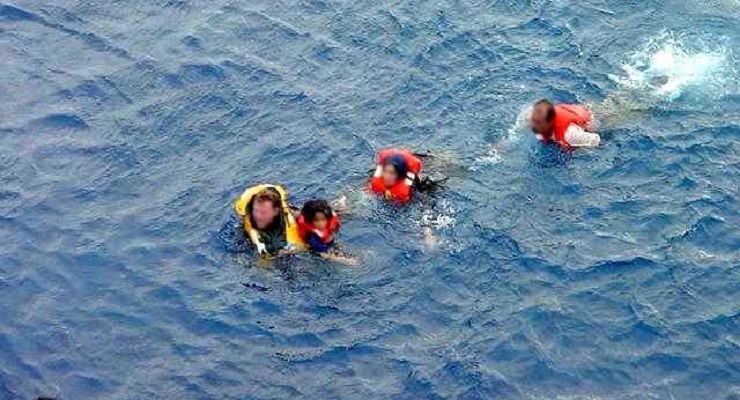
Yesterday three categories of political lie were brought into the light: the pants-on-fire lie; achievement hyperbole; the smear.
Here today are three more examples of the dissembling, the duplicitous, the deceitful … and the outright bull spouted by politicians to what they presume is a gullible electorate.
4. The blame-shifter lie: ‘These are matters for Victoria’
This type of lie is bound up in diverting blame for failure, inaction and downright incompetence.
Given the current federal government’s failure in so many policy areas — aged care, NBN, water policy, the banking scandal, bushfire relief — this category is beginning to shoot up the lie hit parade.
How often has it been claimed over the past year that Victoria must carry the blame for aged care deaths when the federal government has the main responsibility for the sector?
Dennis Atkins thinks the following from Prime Minster Scott Morrison on this subject should be used as a model in journalism and political science classes:
“Well public health, we regulate aged care, but when there is a public health pandemic, then public health, which, whether it gets into aged care, shopping centres, schools or anywhere else, then they are things that are matters for Victoria.”
Another stunning moment came from Stuart Robert, the hapless and hopeless services minister. In his efforts to obscure blame for the robodebt debacle, Robert sought to link the scheme to income matching practices used by Labor governments going back to the 1980s. What he left out of his defence was that the “robo” part — the automation of the system that allowed lives to be systematically and silently destroyed — was introduced by his government in 2016.
5. The vilifying deceit: ‘Children overboard’
What electoral mileage was reaped by then prime minister John Howard from this coordinated untruth in the 2001 election campaign!
And so the vilifying deceit has proved a potent weapon in the Liberal electoral playbook ever since — with a special targeting in recent times of members of the African-Australian community. While we associate such smears most with Home Affairs Minister Peter Dutton (“Victorians are scared to go out to restaurants”) it was the outgoing member for Menzies and all-round government non-performer Kevin Andrews who first got the ball rolling.
Before the 2007 election, Andrews declared that members of this community were failing to integrate — in the face of police statistics that suggested the opposite. The claim was used as cover for announcing a discriminatory immigration policy.
The vilifying lie is arguably the most insidious and reprehensible of all political lies. We know from history what social catastrophe can be spawned from the coordinated and systematic vilification of certain vulnerable groups.
6. Calculated misinformation: sexing up the dossier
The campaign of misinformation is a type of lying aimed at bringing about certain political outcomes. At its heart is a calculated misrepresentation of some state of affairs. Arguably the most notorious example in recent history was the organised concocting of intelligence around Iraq’s possession of weapons of mass destruction used as a basis for invasion.
More recently, the government’s claims about arsonists as the underlying cause of the 2020 bushfire catastrophe can be understood in these terms — in this case as a basis for taking no action on climate change.
There’s also Morrison’s dodgy arithmetic around the alleged delay of ships on Sydney’s waterfront during an industrial action last year.
Describing the action as “straight out extortion“, he claimed the hold-up was of 40 ships, some of which were bringing in vital medical supplies: “You can go down to Port Botany or down to Kurnell and have a look out there and you can see them lining up, and every single one of them lining up is being held back from Australians getting what they need.”
A subsequent RMIT-ABC factcheck of maritime traffic records found that the number of ships waiting to dock at the time was four. The consensus among medical suppliers was that there were “no shortages related to the [industrial] action”.
As the government embarks on its new industrial relations agenda, we can expect to see a ramping up of this type of narrative — with union activity framed as a WMD-like threat to a recovering economy, and the community’s fight against the pandemic.
Next: core and non-core promises, ‘No child will live in poverty under my government’, silence as a lie, gobbledygook.








The Libs have watched the Donald Trump show now. If you ramp up the lies to industrial production levels, you can paint a vaguely reassuring picture of a virtual reality landscape that the public will find beckons them. Then keep it up so that the landscape always seems attainable, even though they can never actually reach it.
Call it policy that targets aspirational voters…
Like Scomo I have 3 daughters. There the similarity ends. a year ago I wrote them a cheat sheet on 9 standard right-wng government propaganda lies that get churned out anew for every generation, along with the rebuttals.. The 9 standard lies were..
1. Government is running up debt like a family living beyond its means with credit cards.
2. The government is borrowing hundreds of millions of dollars every day!
3. The government is saddling future generations/our children with massive debt.
4. We have to be internationally competitive.
5. Government is inefficient and should get out of the way and let business do things.
6. We need a flexible workforce to compete internationally.
7. We don’t need unions anymore because all of the reasons we had them for are fixed.
8. It’s all just politics/about money/power etc.
9. Carbon Taxes and Emissions Trading Schemes.
Still relevant, next election campaign ..
Well done nighthawk. I’ve raised my two darlings similarly. Lies are lies, what can you say.
Blame must go to the popular media – not reporting or following up on the lies of politicians. It is the time of some current “exclusive” with 30 seconds of reporting, and more on scandals rather than the true state of Australian politics. The average Australian is now pretty stupid – loving Scomo’s smile and his 2 or 3 word slogans. We vote them in time and time again – can’t fight it anymore – the misinformation is staggering. Plus the aussies comfortably off, see no need to rock the boat. It does not affect them individually, and as for the workers – well, unions are the scourge of the business world – stop work, strikes, protests – can’t allow that to disrupt life (as one elderly lady said to me years ago, “I can’t travel to the city today”!!!!!) Individualism is the go.
Further to this weeping sore that was Children Overboard – the indulgences and deference afforded by parts of the media (particularly the ABC) when it comes to the “laundering” and promotion of Jane Halton as any sort of “impartial expert” – after her part in that cover-up and the way she carried on (protecting those Howard fire-walls) during the subsequent senate hearing?
“I’m not a policemen”.
“I don’t hold a hose”.
“These are operational matters”.
“These are on-water maters”.
The more I hear and see of Scott Morrison, the more I see The Peter Principle writ large. For here, indeed, is a man completely out of his depth; a man, as the principle would have it, promoted to his level of incompetence. Old William of Ockham might have been onto something. You see, our PM doesn’t give straight answers or honest answers because he doesn’t KNOW the answers. He uses three strategies to cover up his lack of knowledge: obfuscation, evasion and outrage. These are the infantile avoidance mechanisms employed by the recalcitrant child who doesn’t want to look foolish.
Yet it is worse than this. Not only does our PM not have answers, he does have an ideology – an ideology coloured by paternalistic, evangelical conservatism. Thus he doesn’t need or want answers because he is simply “right”.
Our PM is not up for the job.
The most dangerous fool is a zealot – proud of knowing nothing about the real world but certain of knowing the will of god.
That it is what is convenient is just coincidence.